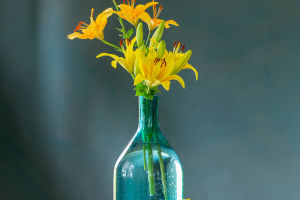Daisies are a popular garden plant renowned for their fresh and simple flowers.
They are widely distributed around the globe, especially in temperate regions. Known for their small, charming flowers, daisies typically feature white petals with yellow centers.
The daisy's appeal extends beyond its appearance; it is also cherished for its symbolic meanings. The scientific name of the daisy, "Bellis perennis," is derived from the Latin word "bellus," which means "beautiful." This name reflects the plant's inherent elegance.
A daisy flower usually consists of a ring of white petals surrounding a central yellow disc. The number of petals can vary, but it is common to see anywhere from a dozen to more than twenty. The yellow center is made up of numerous tiny florets clustered together, forming a round structure.
Daisies have a long history of cultivation. As early as the ancient Greek era, they were widely grown and held various symbolic meanings across different cultures. In ancient Greece, daisies symbolized youth and purity.
The ancient Romans viewed them as a symbol of hope, as they were among the first flowers to bloom in spring. In medieval Europe, daisies were associated with innocence and purity and were often used in wedding decorations.
Growing daisies is relatively simple, making them a favorite among home gardening enthusiasts. They thrive in sunny environments but can also adapt to semi-shaded conditions. Daisies are not very demanding when it comes to soil; well-drained soil is sufficient.
While they can grow in various soil conditions, those rich in organic matter offer a better growing environment. Daisies are typically planted in the spring and germinate soon after sowing. They grow quickly and generally begin to bloom within a few months.
In addition to their role in gardening, daisies have applications in herbal medicine. Traditional herbal practices attribute certain medicinal properties to daisies. They are used to treat common ailments such as coughs and indigestion.
Daisy flowers are believed to have calming effects and can help alleviate anxiety and tension. Although modern medicine has limited scientific evidence supporting these uses, the traditional role of daisies in herbal treatments is still respected.
Daisies also have a variety of uses in contemporary society. They are frequently included in bouquets and are valued for their fresh appearance and extended flowering period.
Additionally, daisy petals are often used to decorate food and beverages, adding a touch of natural beauty. In some cultures, daisies are used as children's headpieces to symbolize innocence and joy.
Daisies hold a significant place in art and literature as well. They are mentioned in numerous poems and literary works, where they often symbolize simplicity and purity.
In paintings, daisies are frequently depicted in fresh, natural scenes, showcasing the beauty and harmony of nature. Their simple aesthetics are used to convey a return to nature, in contrast to the complexities of modern life.
The adaptability of daisies enables them to thrive in a wide range of climates. In temperate regions, daisies are typically annual plants, but in warmer climates, they can behave as perennials. Their cold tolerance allows them to survive in areas with colder winters, further expanding their use in gardening.
Daisies are loved for their beautiful appearance, straightforward cultivation requirements, and rich cultural symbolism. From ancient times to the present day, daisies have maintained a significant role in various cultures and societies. Whether in gardening, herbalism, or artistic endeavors, daisies continue to exhibit their unique charm and value.


